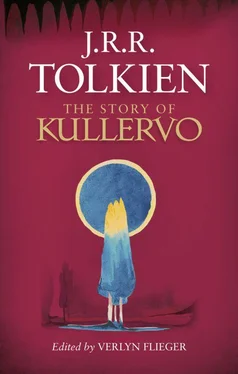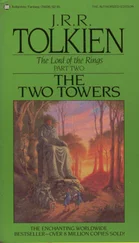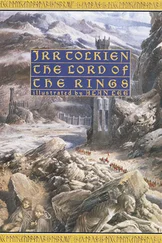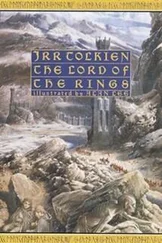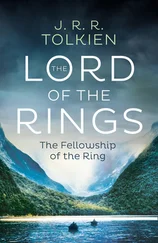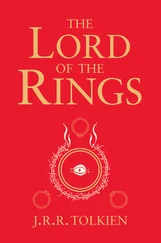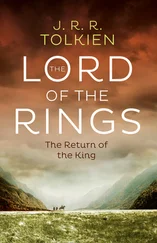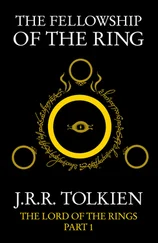The Story of Kullervo was Tolkien’s earliest attempt at retelling — and in the process ‘reorganizing’ — an already-existing tale. As such, it occupies an important place in his canon. Furthermore, it is a significant step on the winding road from imitation to invention, a trial piece by the orphan boy, university undergraduate, returning soldier who loved Kalevala , resonated with Kullervo, and felt the lack of ‘something of the same sort that belonged to the English’.
Verlyn Flieger
Carpenter, Humphrey. J.R.R. Tolkien: a biography . London: George Allen & Unwin, 1977.
Comparetti, Domenico. The Traditional Poetry of the Finns , trans. Isabela M. Anderton. London: Longmans, Green, and Co., 1898.
Dorson, Richard M. The British Folklorists: A History . Chicago: University of Chicago Press, 1968.
Finnish Folk Poetry Epic , Edited and Translated Matti Kuusi, Keith Bosley, and Michael Branch. Helsinki: Finnish Literature Society, 1977.
Garth, John. ‘“The road from adaptation to invention”: How Tolkien Came to the Brink of Middle-earth in 1914,’ Tolkien Studies XI. Morgantown West Virginia: West Virginia University Press, 2014.
‘Hausa Folktales’ by F.W.H.M. in African Affairs , Oxford University Press, 1914; XIII 457.
Helms, Randel. Tolkien and the Silmarils . Boston: Houghton Mifflin Company, 1981.
Higgins, Andrew. ‘The Genesis of J.R.R. Tolkien’s Mythology.’ Thesis in fulfillment of PhD, Cardiff Metropolitan University, 2015.
Lang, Andrew. Custom and Myth , 2nd edition. London: Longmans, Green, and Co., 1893.
Lönnrot, Elias. Kalevala , 2 vols. Translated W.F. Kirby. London: Dent, Everyman’s Library, 1907.
—. Kalevala: Epic of the Finnish People, 2nd edition. Translated Eino Friberg. Helsinki: Otava Publishing Company, Ltd., 1988.
—. The Kalevala: Or Poems of the Kaleva District . Translated Francis Magoun. Cambridge: Harvard University Press, 1963.
Noad, Charles. E. ‘On the Construction of “The Silmarillion”’ in Tolkien’s Legendarium: Essays on The History of Middle-earth, ed. Verlyn Flieger and Carl F. Hostetter. Westport, Connecticut: Greenwood Press, 2000.
Pentikainen, Juha. Kalevala Mythology , Translated and edited Ritva Poom. Bloomington: Indiana University Press, 1987.
Petty, Anne. C. ‘Identifying England’s Lönnrot’ in Tolkien Studies , Vol. I. Morgantown: West Virginia University Press, 2004.
Scull, Christina and Wayne G. Hammond. The J.R.R. Tolkien Companion and Guide: Chronology and Reader’s Guide . London: HarperCollins Publishers , 2006.
Shippey, Tom. The Road to Middle-earth. Revised and expanded ed. London: HarperCollins Publishers , 2005.
Swank, Kris. ‘The Irish Otherworld Voyage of Roverandom,’ in Tolkien Studies Volume XII. Morgantown, West Virginia University Press, 2015.
Tolkien, J.R.R. Beowulf and the Critics , Edited Michael D.C. Drout. Tempe, AZ. Arizona Center for Medieval and Renaissance Studies, 2002.
—. The Book of Lost Tales, Part One . Boston: Houghton Mifflin Company, 1983.
—. The Letters of J.R.R. Tolkien , ed. Humphrey Carpenter. London: George Allen & Unwin, 1981.
—. The Lord of the Rings . London: HarperCollins Publishers , 1991.
—. ‘The Etymologies’, The Lost Road , ed. Christopher Tolkien. London: Unwin Hyman, 1987.
—. Qenyaqetsa: The Qenya Phonology and Lexicon , Edited Christopher Gilson, Carl F. Hostetter, Patrick Wynne and Arden R. Smith. Parma Eldalamberon 12. Cupertino, CA, 1998.
—. ‘The Shores of Faëry’, The Book of Lost Tales, Part Two , ed. Christopher Tolkien. London: George Allen & Unwin, 1984.
—. The Silmarillion , 2nd edition, ed. Christopher Tolkien. London: HarperCollins Publishers , 1999.
—. ‘The Story of Kullervo’ edited and transcribed Verlyn Flieger. Tolkien Studies , Vol. VII, Morgantown: West Virginia University Press, 2010.
—. Tolkien On Fairy-stories . Expanded edition, with commentary and notes. Edited Verlyn Flieger and Douglas A. Anderson. London: HarperCollins Publishers , 2008.
—. ‘The Voyage of Éarendel the Evening Star’, The Book of Lost Tales, Part Two , ed. Christopher Tolkien. London: George Allen & Unwin, 1984.
Tremearne, Major Arthur John Newman. Hausa Folktales . London: J. Bale, Sons & Danielson, 1914.
West, Richard. C. ‘Setting the Rocket off in Story’, Tolkien and the Invention of Myth , ed. Jane Chance. Lexington, KY: The University Press of Kentucky, 2004.
—. ‘Túrin’s Ofermod ’ in Tolkien’s Legendarium: Essays on The History of Middle-earth, ed. Verlyn Flieger and Carl F. Hostetter. Westport, Connecticut: Greenwood Press, 2000.
THE HOBBIT
LEAF BY NIGGLE
ON FAIRY-STORIES
FARMER GILES OF HAM
THE HOMECOMING OF BEORHTNOTH
THE LORD OF THE RINGS
THE ADVENTURES OF TOM BOMBADIL
THE ROAD GOES EVER ON (WITH DONALD SWANN)
SMITH OF WOOTTON MAJOR
Works published posthumously
SIR GAWAIN AND THE GREEN KNIGHT, PEARL AND SIR ORFEO*
THE FATHER CHRISTMAS LETTERS
THE SILMARILLION*
PICTURES BY J.R.R. TOLKIEN*
UNFINISHED TALES*
THE LETTERS OF J.R.R. TOLKIEN*
FINN AND HENGEST
MR BLISS
THE MONSTERS AND THE CRITICS & OTHER ESSAYS*
ROVERANDOM
THE CHILDREN OF HúRIN*
THE LEGEND OF SIGURD AND GUDRúN*
THE FALL OF ARTHUR*
BEOWULF: A TRANSLATION AND COMMENTARY*
The History of Middle-earth — by Christopher Tolkien
I THE BOOK OF LOST TALES, PART ONE
II THE BOOK OF LOST TALES, PART TWO
III THE LAYS OF BELERIAND
IV THE SHAPING OF MIDDLE-EARTH
V THE LOST ROAD AND OTHER WRITINGS
VI THE RETURN OF THE SHADOW
VII THE TREASON OF ISENGARD
VIII THE WAR OF THE RING
IX SAURON DEFEATED
X MORGOTH’S RING
XI THE WAR OF THE JEWELS
XII THE PEOPLES OF MIDDLE-EARTH
* Edited by Christopher Tolkien
They also raised questions about the role of the collector in selecting, editing, and presenting what is collected, leading to the accusation, specific to Kalevala , of ‘folklore or fakelore’; but that is a subject for a different discussion. When Tolkien was first reading Kalevala he and others took it at face value.
See Kris Swank’s article ‘The Irish Otherworld Voyage of Roverandom ’ in Tolkien Studies Volume XII, planned for publication in 2015.
Written in margin ‘alay his suspicion aroused by his sister’s death’.
A circumstance worth noting is that Kemenūme appears in very early notes on Qenya as a name for Russia. See also ‘Ilu’ below.
This statement, misleadingly associated in Humphrey Carpenter’s biography with Tolkien’s undergraduate time at Oxford, does not appear in the manuscript draft of 1914–15, written while he was still a student and before he went to war. It thus comes out of a different context from the original talk with which Carpenter conflated it, and is all the more to be associated with Tolkien’s burgeoning idea of a ‘mythology for England’. The remark was Tolkien’s response to the myth-and-nationalism movement that spread through Western Europe and the British Isles in the 19th and early 20th centuries but had been brought to a halt by the 1914 war. Out of that pre-war movement came Wilhelm Grimm’s, Jacob Grimm’s, Jeremiah Curtin’s, Moe and Asbjørnsen’s, Lady Guest’s translation of the Welsh, in addition to Elias Lönnrot’s (1835) and expanded (1849) and a host of other myth and folklore collections.
Читать дальше
